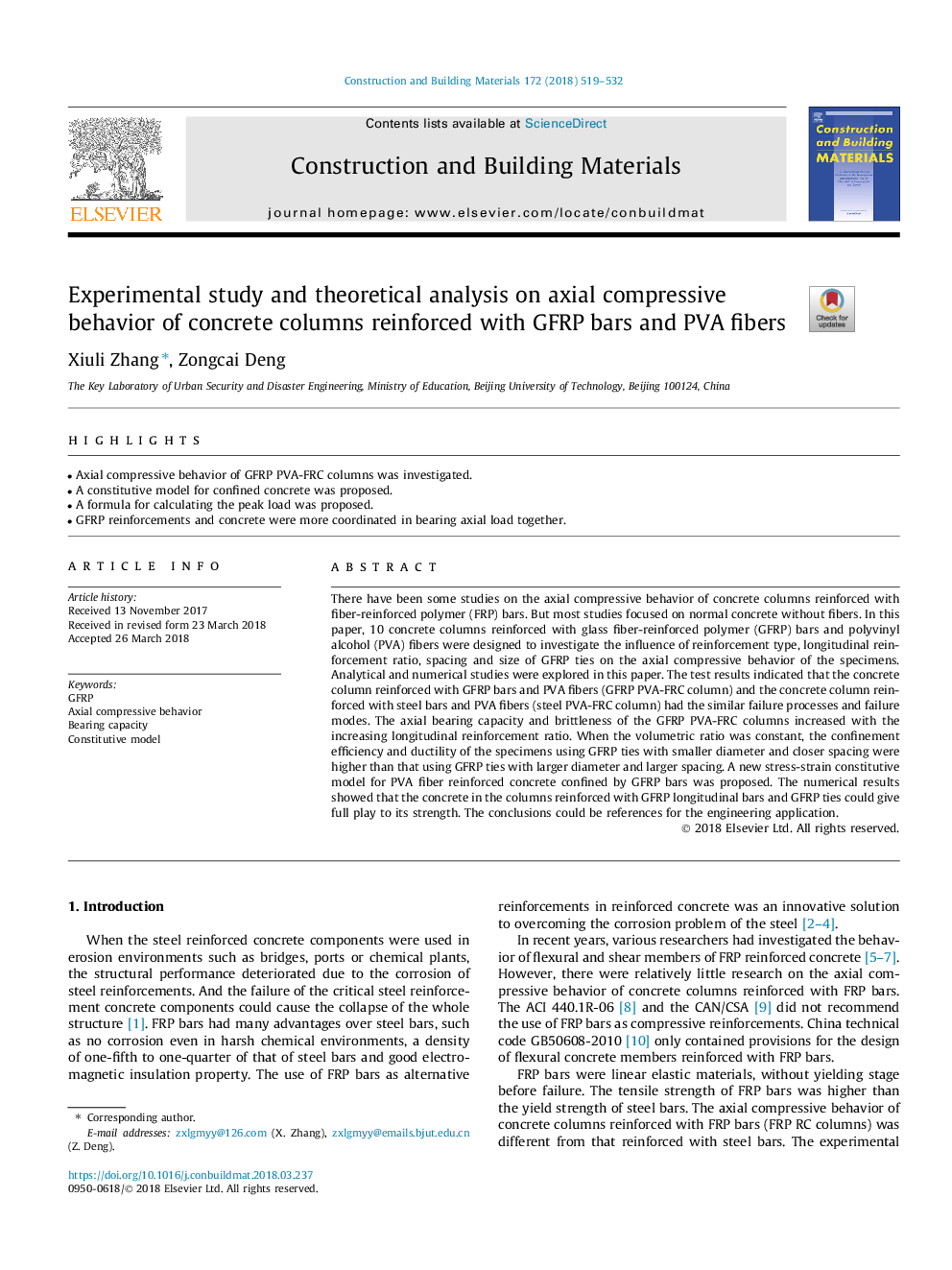| Article ID | Journal | Published Year | Pages | File Type |
|---|---|---|---|---|
| 6713952 | Construction and Building Materials | 2018 | 14 Pages |
Abstract
There have been some studies on the axial compressive behavior of concrete columns reinforced with fiber-reinforced polymer (FRP) bars. But most studies focused on normal concrete without fibers. In this paper, 10 concrete columns reinforced with glass fiber-reinforced polymer (GFRP) bars and polyvinyl alcohol (PVA) fibers were designed to investigate the influence of reinforcement type, longitudinal reinforcement ratio, spacing and size of GFRP ties on the axial compressive behavior of the specimens. Analytical and numerical studies were explored in this paper. The test results indicated that the concrete column reinforced with GFRP bars and PVA fibers (GFRP PVA-FRC column) and the concrete column reinforced with steel bars and PVA fibers (steel PVA-FRC column) had the similar failure processes and failure modes. The axial bearing capacity and brittleness of the GFRP PVA-FRC columns increased with the increasing longitudinal reinforcement ratio. When the volumetric ratio was constant, the confinement efficiency and ductility of the specimens using GFRP ties with smaller diameter and closer spacing were higher than that using GFRP ties with larger diameter and larger spacing. A new stress-strain constitutive model for PVA fiber reinforced concrete confined by GFRP bars was proposed. The numerical results showed that the concrete in the columns reinforced with GFRP longitudinal bars and GFRP ties could give full play to its strength. The conclusions could be references for the engineering application.
Related Topics
Physical Sciences and Engineering
Engineering
Civil and Structural Engineering
Authors
Xiuli Zhang, Zongcai Deng,
